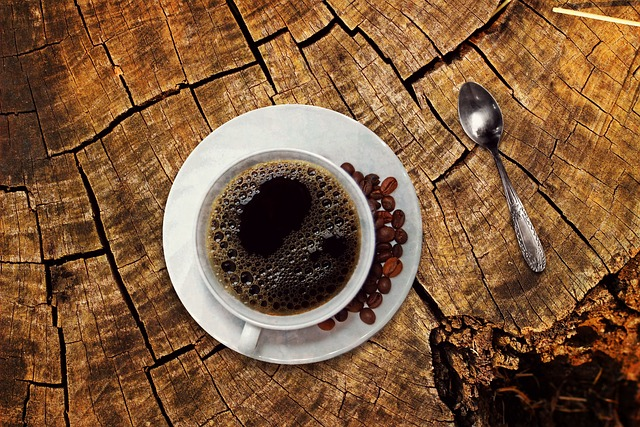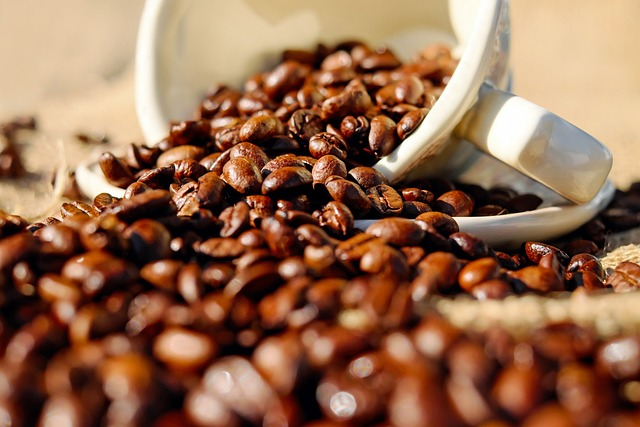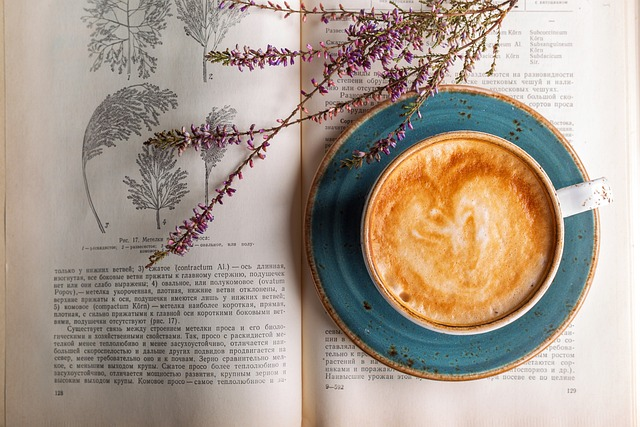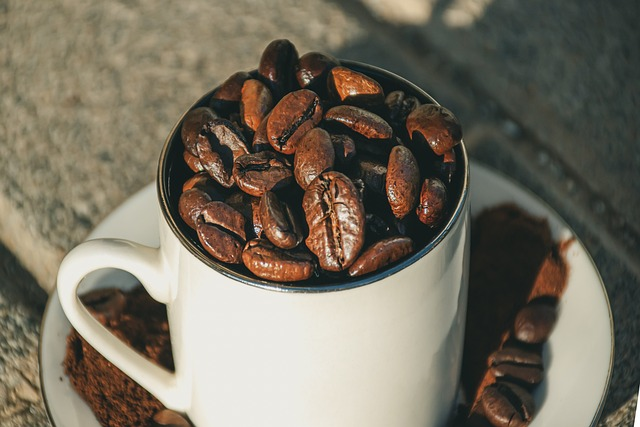How to create your own coffee blend
If you’re a coffee drinker, chances are you’ve thought about making your own coffee blend at some point in time, and if not, why not!
Coffee beans can be used to make the most delicious and unique coffee blends you could ever imagine. It doesn’t matter whether you’re thinking of making your own coffee blends, a custom coffee blend, or simply whipping up a delicious cup of char quickly, if you use the right coffee beans and know what you’re doing, your cup of Joe will be out of this world.
Making your own blend of coffee is like an art form. If you thought it was just a case of combining a bunch of coffee beans together and hoping for the best, you’re very much in for a rude awakening. If you get the blend just right however, and go with the right personal coffee blend that appeals to you and your palate, you’ll be drinking liquid heaven every single morning.
From single origin coffee to dark roast, and everything in between, here’s a look at what you need to know about coffee beans and coffee blending.
Is a coffee blend the same as single origin coffee?

Before we can get down to the good stuff and start talking about making your own coffee blend and which coffee beans to use, first off we need to look at whether or not single origin coffees are the same as coffee blend coffees.
Though similar, single origin coffees are different to coffee blend because they come from the same coffee bean with one origin. If the coffee is made from beans that originate from Colombia for example, then that is a single origin coffee.
On the other side of the coin however, if a coffee is made from beans from a variety of different regions and global locations such as Colombia, Brazil, and Ethiopia for example, it can then be classed as a coffee blend.
Why choose a coffee blend?
Despite blends and single origins both offering unique advantages, many agree that people who prefer a more well rounded coffee, going with roasters coffee blends would be better than sticking with a single origin such as Ethiopian coffee.
Don’t get us wrong, single origin can be truly delicious, but for people who like to explore new flavours and enjoy extra layers when drinking their cup of char, a blend coffee would be preferable.
The great thing about blends is the fact that different coffee beans offer different taste and aroma profiles. Green beans before roasting for example, may offer nutty aromas and flavours, whereas roasted beans may offer a sweet, even smoky finish.
So, what exactly is a coffee blend?

We’ve looked at the basics of coffee blending, and we’ve looked at what sets it apart from a single origin coffee, but what exactly is a coffee blend?
Coffee blending is an artform and is something that coffee aficionados, coffee shops, and even casual coffee drinkers, should try at least once.
One of the main reasons why liquid coffee makers create their own signature blend is so that they can create different flavour profiles and aromas. One blend of different coffee beans might create acidity or floral aromas whereas another could produce sweet, nutty, and smoky aromas and flavours.
Coffee blends therefore, are basically a combination of different beans and component coffees from different parts of the world.
Different coffee beans and coffee blends

In theory, you could select every single coffee bean in existence, combine them together, and use them to make your own personal coffee blend. Just because you can however, doesn’t mean that you should.
Creating coffee blends is very tricky because you need to get the balance just right. To help show you just how tricky it can be, here are some popular examples of different blends that you could use to make the perfect coffee blend.
Black and tan
Black and tan is a popular coffee blend that gets its name from the fact that it uses dark black coffee beans, and lighter brown beans.
This blend is great because you get deep and earthy notes, smoky notes, and slightly milder, floral notes and aromas. The bitterness is offset by diluting the coffee with different flavor combinations of milder component coffee blends.
Usually you’ll find that Central or Southern American coffee is used, such as Colombian coffee, though other types of component coffee can also be used.
Mocha Java

Check out any coffee shop and you will almost certainly find Mocha Java coffee on the menu, and rightly so.
Mocha Java coffee blends are roasted light and this blend was actually created by mistake. The story goes that back in the 15th century, Indonesian coffee beans from Java made their way to the Yemeni port of Mocha. Here, coffees were fruitier and lighter, so combining Indonesian coffee beans with those from Mocha, made for a light, floral base coffee with sweet base notes and a wonderful aroma.
Melange
Another popular coffee blend is one which is known as Melange.
This is more of a traditional coffee blend. It is considered a “safe” coffee for people who like a more basic, yet equally delicious cup of coffee with flavour notes you’d expect to find in most standard coffees.
Basically, this blend combines coffee beans roasted to differing levels, so you’ll have light roasts, medium roasts, and dark roasts in there, covering all bases. This gives the right balance of bitterness with bright acidity and high notes.
How much coffee, or rather, how much coffee beans you use in this blend will very much determine how the final batch will taste.
How to blend your own coffee
Okay, the time has come for you to take the wheel, as it were, and start discovering how you can blend your very own coffee.
As intimidating as it may sound, blending coffee is not actually that difficult, it’s all about using the right beans and getting your ratios correct. Do that, and you’re golden.
Here are some tips on blending your own cups of coffee.
Choose the right component coffee
First and foremost, if you really want to produce a premium quality coffee blend, you need to get the right component coffee. This means finding the right flavour profile.
You’ll need a coffee bean which offer high notes, referring to floral and acidity levels. Usually African beans such as those from Kenya, or Ethiopia, offer high notes, along with some Middle Eastern beans.
Next you need to focus on your mid-palate. This is what you will taste from your first sip of coffee until you swallow it. Put simply, this is going to be the prominent flavour so you’ll need a coffee that you enjoy drinking.
For added sweetness and to balance everything out, you’ll want a coffee bean that offers sweet base notes. When the beans are heated and roasted, naturally occurring enzymes and sugars in the beans caramelize and offer a sweet taste. It’s the same reason why onions get sweeter as you cook them. if you want to get all technical, this is known as the ‘Maillard Reaction’. Usually, Brazilian coffee beans, or Mexican coffee beans, work best for this step.
Nail those ratios
Now that you know about your three base layers, the next thing you need to focus on is your ratios.
If this coffee blend is exclusively for you, you’ll want to go with a ratio of bean that suits your palate. If for example, you like a sweeter coffee, you’ll want to include more coffee beans that offer sweet base notes, such as a Brazilian bean.
You could therefore, go with a ratio of 20% Kenyan, 20% Colombian, and 60% Brazilian, in a ratio of 20/20/60. If you prefer a richer, more bitter and acidic coffee, you could maybe go with a ratio of 50/30/20.
Experiment, try different ratios and find ones that appeal to you the most.
Pre blend or post-blend?
Creating your own coffee is very rewarding, though it is also tricky. Next comes the tricky decision of whether to blend your coffees before or after roasting.
A pre blend coffee uses green coffee beans in their raw state, mixing them together, and then roasting them. A post blend is where you roast each type of coffee bean separately, and then combine them together after they have been roasted individually.
Good Tasting Coffee: How to Identify Coffee Flavors

In order to appreciate the different types of coffee available, it's important to cultivate an awareness of its unique characteristics. Let's take a look at the way coffee connoisseurs judge different cups of coffee.

Aroma
The scent of a cup of coffee has a direct influence on how we perceive its flavor. As you drink coffee try to notice if the scent is smoky, fruity, earthy, spicy, nutty or grassy.
Acidity
One of the most defining characteristics of a cup of coffee is its acidity. This is the sharp, bright tangy quality of coffee that perks up our senses. Coffee doesn’t necessarily contain just one type of acid, either. It may contain citric acid, malic acid (fruity in flavor) or even quinic acid from stale coffee, which gives us stomach aches.
Body
This is the weight, thickness and texture of coffee in your mouth. The body of different types of coffee falls on a spectrum of light- to full-bodied viscosity (thin to thick).
Flavor
This is where comparisons come in handy and there is some overlap between aroma and flavor. Your coffee might taste bitter, sweet, savory or sour with common comparisons to chocolate, wine or fruit.
Related Posts

















